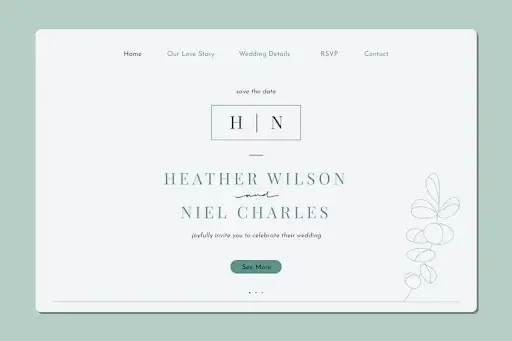How to Create Your Own Wedding Website Step by Step
Planning a wedding once meant juggling spreadsheets, envelopes and constant phone calls. Today the smarter route is a personal website that gathers every detail in one secure place and makes budgeting as clear as a fintech dashboard. Follow this practical roadmap to move from blank screen to polished portal with zero stress.

Clarify your goals and set a budget
Begin by writing down exactly what you need the site to do. Some couples only want a digital invitation. Others plan to collect meal choices, manage travel logistics and accept cash gifts in multiple currencies. Listing every must-have feature with an estimated cost in time or money keeps ambitions realistic and prevents scope creep later on.
Pick the right platform
A full-service builder saves hours compared with coding from scratch. At minimum compare options on three axes:
- Ease of use: drag-and-drop editing should feel intuitive even to a busy professional
- Fintech integrations: native support for Stripe, PayPal or local payment rails lets guests contribute without leaving the page
- Analytics: dashboards show who opened the invite and which pages receive the most visits
If you already run a family blog on WordPress you could add a wedding theme, but purpose-built tools like Wedding Planning Assistant often work faster and cost less. During these comparisons you will see how creating a wedding website can be as simple as choosing the right template and enabling the payment plugin you already trust.
Secure a memorable domain and reliable hosting
Your URL should be short and easy to spell. Many couples combine their first names. Use a registrar that bundles WHOIS privacy and SSL certificates. Encrypting traffic protects guest addresses and card details while also boosting search-engine credibility.
Craft the visual identity
A wedding site doubles as a brand kit for your celebration. Choose two harmonious web-safe fonts and a restrained colour palette that matches your invitation suite. Keep load times low by compressing photos and limiting plugins. Mobile responsiveness is vital, because most guests will open the link on a phone during a commute or coffee break.
Build the core pages
Here are the essentials every guest expects:
- Welcome or Story: share how you met and what inspires your partnership
- Event details: date, venue map, dress code, parking info, local weather tips
- Schedule: ceremony, cocktail hour, reception, after-party
- Travel and lodging: hotel blocks, transit cards, ride-hailing discount codes
- Gift registry: link physical items plus a cash fund via secure fintech widgets
- RSVP form: collect names, dietary requirements and plus-ones
Add a clear call to action at the end of each page so visitors always know what to click next.
Optimise transactions and data flow
Modern guests expect frictionless payments. Integrate digital wallets and local bank transfer options. Automatically convert foreign currencies (if supported by your platform) to avoid hidden spreads. Connect the RSVP form to a spreadsheet or CRM so seating charts update in real time. Each efficiency here frees up budget for flowers or a live band.
Protect privacy and compliance
Enable multi-factor login for administrators. Store guest information in encrypted databases and delete it after the event. If any invitees live in the EU ensure GDPR rights are respected. Display a concise privacy notice in the footer and link to your payment processor’s security certifications.
Test on real devices
Invite two or three tech-savvy friends to try every function. Ask them to register, change their meal choice and donate a symbolic pound or dollar. Their feedback will expose broken links and unreadable fonts before the entire guest list sees them.
Launch and promote
Send personalised emails with the site URL embedded in a QR code. Post teaser photos on social media that direct followers to the schedule page. Include the link on printed save-the-dates so offline relatives are not left behind. Once live all information sits in one place that updates instantly whenever your florist adjusts delivery time.
Maintain and archive
After the ceremony, replace the countdown with a thank-you video and a gallery of professional photos. Keep the domain active for at least a year so late gift-givers can still reach the registry. Export guest messages and budget reports to your personal cloud, then consider turning the site into a time-capsule blog.
Final thoughts
A wedding website is more than a digital invitation. It becomes a miniature fintech platform that handles payments, data analytics and privacy compliance while telling the story of your day. Follow these ten steps and you will deliver a seamless guest experience, safeguard sensitive details and keep your finances transparent from proposal to honeymoon. Your future self will thank you every time you open the clean ledger and see exactly how love and logic came together on one elegant page.
